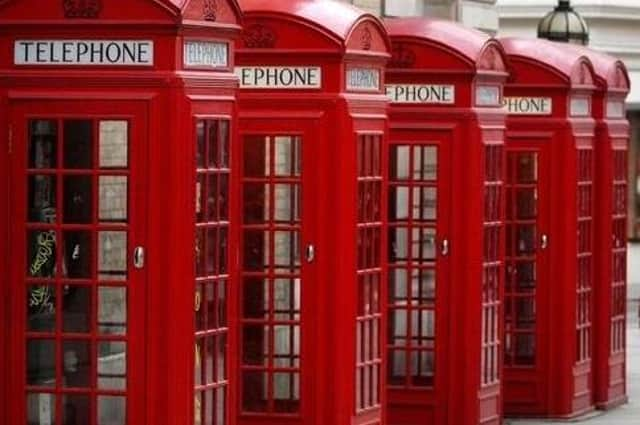Blast from the past: The red phone box


Before the ubiquity of landlines, mobile phones and email, phone boxes, those lipstick-red, semi-private structures dotted around towns, villages and rural areas, kept us connected with each other.
There was one at the end of my street when I was at university. It was never free, which meant an interminable, spirit-crushing wait in a long queue and unintentional earwigging as the user kept feeding it coins.
Advertisement
Hide AdAdvertisement
Hide AdIt was best not to linger long in the phone box, for to enter was to be enveloped in a fug of stale cigarette smoke and the reek of urine. The phone books were invariably torn to shreds and graffiti was scrawled on every surface.
Their floors were carpeted with fag-ends and other detritus.
If you found a phone box that had not been vandalised, you had to keep rifling in your pockets for coins during a conversation flecked with beeps and clicks as the money ran out; reversing the charges was always a good call for impoverished students.
Red kiosks could provide shelter - who has hasn’t huddled in a phone box when it lashed with rain? Many couples canoodled within their cosy confines and prank calls were made from them.
Advertisement
Hide AdAdvertisement
Hide AdThese days it is rare to see a red phone box in Northern Ireland, unless someone has purloined one for use as a garden feature, or it’s being used as a quirky feature in a pub, to contain a defibrillator or a micro library.
The red phone box was designed in 1924 by the architect Sir Giles Gilbert Scott, whose other creations include Liverpool’s Anglican cathedral and Battersea and Bankside power stations. After 1926 the iconic boxes were also emblazoned with a prominent crown to represent the British government. There have been many series of the boxes namely the K1, K2, K3, K4, K5 and K6, known as the Jubilee Kiosk because it was designed in honour of the Silver Jubilee of King George V
At their peak, there were 73,000 red kiosks across the UK; figures from 2018 suggest there are fewer than 200 in Northern Ireland.
Technology eventually rang the changes for red kiosks, but many of us will remember the majestic boxes with fondness - except when they smelt more like a public convenience, than amenity.
A message from the Editor:
Advertisement
Hide AdAdvertisement
Hide AdThank you for reading this story on our website. While I have your attention, I also have an important request to make of you.
With the coronavirus lockdowns having had a major impact on many of our advertisers — and consequently the revenue we receive — we are more reliant than ever on you taking out a digital subscription.
Subscribe to newsletter.co.uk and enjoy unlimited access to the best Northern Ireland and UK news and information online and on our app. With a digital subscription, you can read more than 5 articles, see fewer ads, enjoy faster load times, and get access to exclusive newsletters and content.
Visit https://www.newsletter.co.uk/subscriptionsnow to sign up.
Advertisement
Hide AdAdvertisement
Hide AdOur journalism costs money and we rely on advertising, print and digital revenues to help to support them. By supporting us, we are able to support you in providing trusted, fact-checked content for this website.
Ben Lowry, Editor
Comment Guidelines
National World encourages reader discussion on our stories. User feedback, insights and back-and-forth exchanges add a rich layer of context to reporting. Please review our Community Guidelines before commenting.